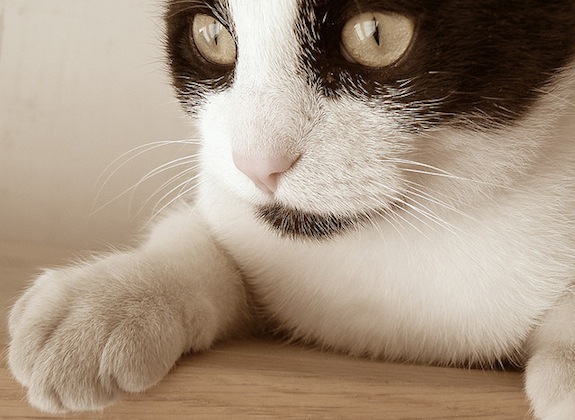Scientists Don’t Quite Know How This Cat Managed Her 200-Mile Trek Home
Holly the cat’s 200 mile journey home has scientists wondering just how animals navigate

What do you mean “go outside?” Eddy Van 3000
When Holly, a 4-year-old housecat, disappeared in November, everyone thought she was a goner. The cat lost the family in Daytona Beach, Florida. But the family lived in West Palm Beach, nearly 200 miles away. After some searching, they gave up and drove home. They certainly didn’t expect for Holly to stagger into their neighborhood two months later. But there she was, found not a mile from their house. Which makes scientists wonder: how did she do it?
The New York Times’ Well Blog writes:
There is, in fact, little scientific dogma on cat navigation. Migratory animals like birds, turtles and insects have been studied more closely, and use magnetic fields, olfactory cues, or orientation by the sun.
Scientists say it is more common, although still rare, to hear of dogs returning home, perhaps suggesting, Dr. Bradshaw said, that they have inherited wolves’ ability to navigate using magnetic clues. But it’s also possible that dogs get taken on more family trips, and that lost dogs are more easily noticed or helped by people along the way.
The experiment is difficult to do, really. “Nobody’s going to do an experiment and take a bunch of cats in different directions and see which ones get home,” animal behaviorist Peter Borchelt told the Times.
But one research group is doing something somewhat similar, according to the blog. The Kitty Cams project has outfitted 55 cats with cameras to examine just what they’re doing out there. They collected 37 hours of footage per cat and found:
Results indicate that a minority of roaming cats in Athens (44%) hunt wildlife and that reptiles, mammals and invertebrates constitute the majority of suburban prey. Hunting cats captured an average of 2 items during seven days of roaming. Carolina anoles (small lizards) were the most common prey species followed by Woodland Voles (small mammals). Only one of the vertebrates captured was a non-native species (a House Mouse). Eighty-five percent of wildlife captures were witnessed during the warm season (March-November in the southern US). Cats roaming during warmer seasons were more likely to exhibit hunting behavior and the number of captures per hunting cat is expected to decrease with increasing cat age. Cat age, sex, and time spent outside did not significantly influence hunting behavior.
Holly isn’t the first cat to travel a long way to get home (“Homeward Bound” excluded). Howie, a Persian cat, wandered 1,000 miles across the Australian outback to find his family. It took him twelve months. A family that moved from Illinois to Michigan once found their former dog (they have given poor Tony away for adoption) at their doorstep. Animal Planet writes about Troubles, a dog who navigated the hostile Vietnamese jungle:
Troubles, a scout dog, and his handler, William Richardson, were taken via helicopter deep into the war zone in South Vietnam in the late 1960s. When Richardson was wounded by enemy fire and taken to a hospital, Troubles was abandoned by the rest of the unit. Three weeks later, Troubles showed up at his home at the First Air Cavalry Division Headquarters in An Khe, South Vietnam. But he wouldn’t let anyone near him — he was on a mission! Troubles searched the tents and eventually curled up for a nap after he found a pile of Richardson’s clothes to use for a bed.
But how these animals actually do this is still a total mystery.
More from Smithsonian.com:
World’s Coolest Animal Bridges
How Do Animals Perceive the World?
/https://tf-cmsv2-smithsonianmag-media.s3.amazonaws.com/accounts/headshot/Rose-Eveleth-240.jpg)
/https://tf-cmsv2-smithsonianmag-media.s3.amazonaws.com/accounts/headshot/Rose-Eveleth-240.jpg)